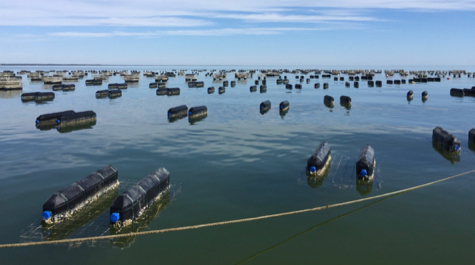By David Malmquist, VIMS.
The rapid growth of oyster aquaculture in the Chesapeake Bay has raised questions about its effects on water quality, with proponents touting benefits including reduction of water-column nutrients and increased clarity, and other stakeholders pointing to drawbacks such as enrichment of sediment nutrients and altered current patterns.
A new field study by researchers at William & Mary’s Virginia Institute of Marine Science shows minimal impacts from oyster aquaculture overall, suggesting that low-density oyster farms located in well-flushed areas are unlikely to impair local water quality. Published in today’s issue of PLOS ONE, the study was authored by VIMS doctoral student Jessie Turner along with Lisa Kellogg, Grace Massey and Carl Friedrichs. Partial funding was provided by The Nature Conservancy.
“We found differences in water quality and current speed inside and outside the farms,” says Turner, “but they were minor. The differences we measured between sites and between seasons were typically an order of magnitude greater.”
The team’s findings suggest room for growth in oyster aquaculture in the Bay, as long as growers continue using low-density culture with well-spaced cages.
READ MORE at wm.edu

